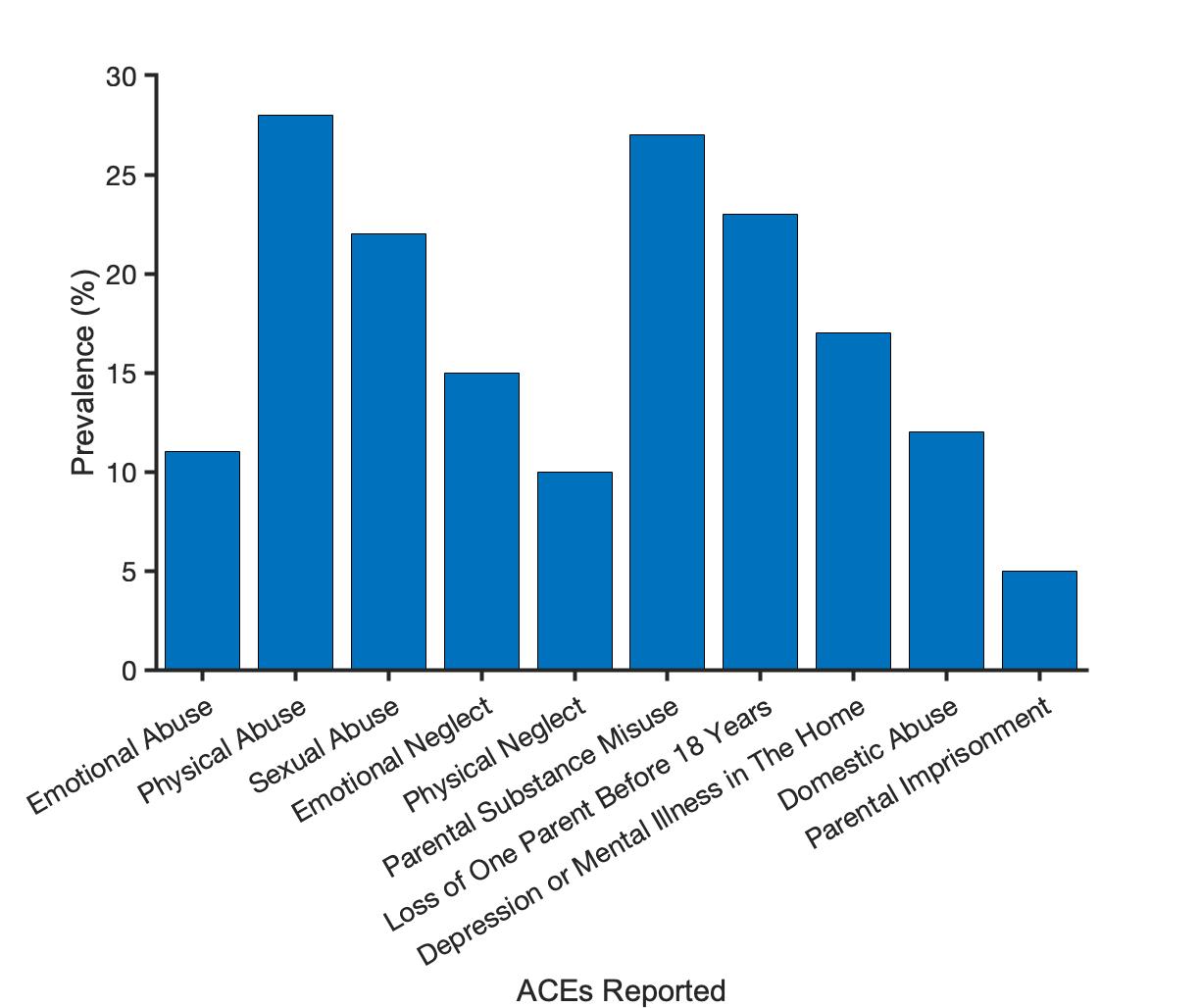Adverse childhood* experiences are events or situations likely to cause harm or distress that a child either experiences themself or encounters within their environment**, which undermine their sense of safety.
Events that a child might experience themself could include, but are not necessarily limited to (in no particular order): physical abuse/neglect, emotional abuse/neglect, sexual abuse, bullying/discrimination, poor health, displacement and/or famine.
Events that a child encounters within their environment include, but are not limited to (in no particular order): substance abuse in the home, a family member who is incarcerated, violence or harassment within the home or community, war, losing somebody important to them, parental illness, and parental separation***.
Important, practical considerations when applying this definition:
*Childhood is the time during which human beings develop physically and mentally (United Nations Convention on the Rights of the Child at https://www.unicef.org.uk/what-we-do/un-convention-child-rights/), but there are different operational definitions with respect to the age range of childhood that can be adopted. The United Nations’ Convention on the Rights of the Child defines a child as “every human being below the age of 18 years unless under the law applicable to the child, majority is attained earlier” (https://www.ohchr.org/en/instruments-mechanisms/instruments/convention-rights-child). Legally, childhood is defined as up to 18 years of age in the UK but the General Medical Council defines children as people up to 18 years of age in England, Wales, and Northern Ireland, and up to 16 in Scotland (https://www.gmc-uk.org/professional-standards/professional-standards-for-doctors/protecting-children-and-young-people/definitions-of-children-young-people-and-parents). More recently, adolescence has been proposed to extend to 24 years of age (Sawyer et al., 2018, doi: https://doi.org/10.1016/S2352-4642(18)30022-1). So for clarity, the exact age range of childhood should be clearly defined in light of the study context.
**People may not remember the timing of ACEs that occurred, but still be aware that the events occurred during their childhood.
***It should be noted that some events listed (e.g., separation of parents) may not be interpreted as a traumatic experience for all children and there may be other harmful or distressing events that can be classified as ACEs that are not included.
The CDC-Kaiser Permanente Adverse Childhood Experiences (ACE) Study is one of the largest investigations of childhood abuse and neglect, and later-life health and wellbeing. The study had 17,337 participants studied over a lifespan. Almost two-thirds of the study’s participants reported experiences at least one ACE, while more than one in five (20%) reported three or more ACEs.


ACEs have a significant impact on adult physical and mental health. The adverse childhood experiences reported in the ACE study were:
- Emotional Abuse (11%)
- Physical Abuse (28%)
- Sexual Abuse (22%)
- Emotional Neglect (15%)
- Physical Neglect (10%)
- Parental Substance Misuse (27%)
- Loss of One Parent Before 18 Years (23%)
- Depression or Mental Illness in The Home (17%)
- Domestic Abuse (13%)
- Parental Imprisonment (5%)
Children exposed to several ACEs are likely to have more health problems in later life, including chronic pain. Although there is good evidence that ACEs contribute to health inequalities, screening for ACEs is limited.
Through CAPE’s research, we aim to identify a relationship between ACEs and vulnerability to chronic pain.
